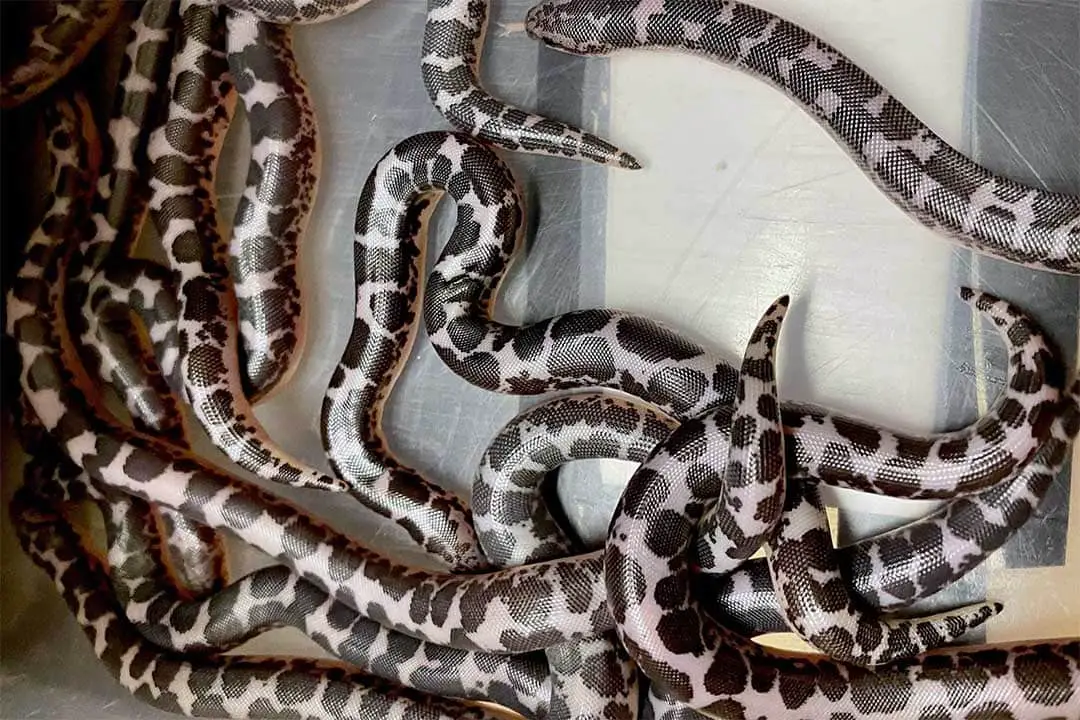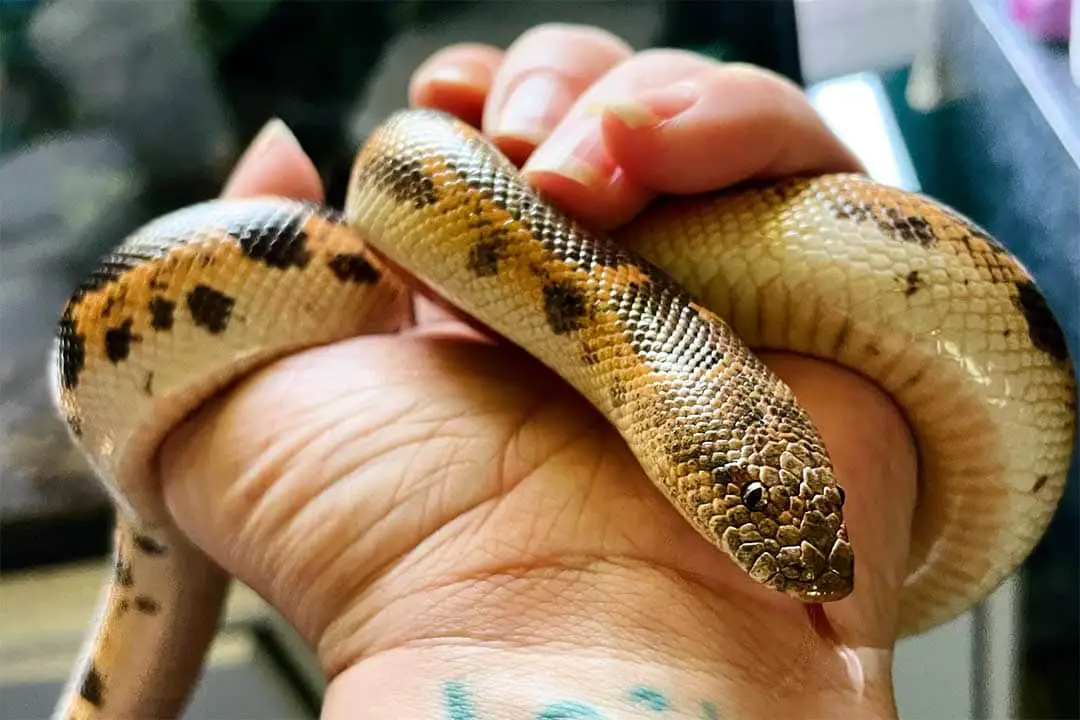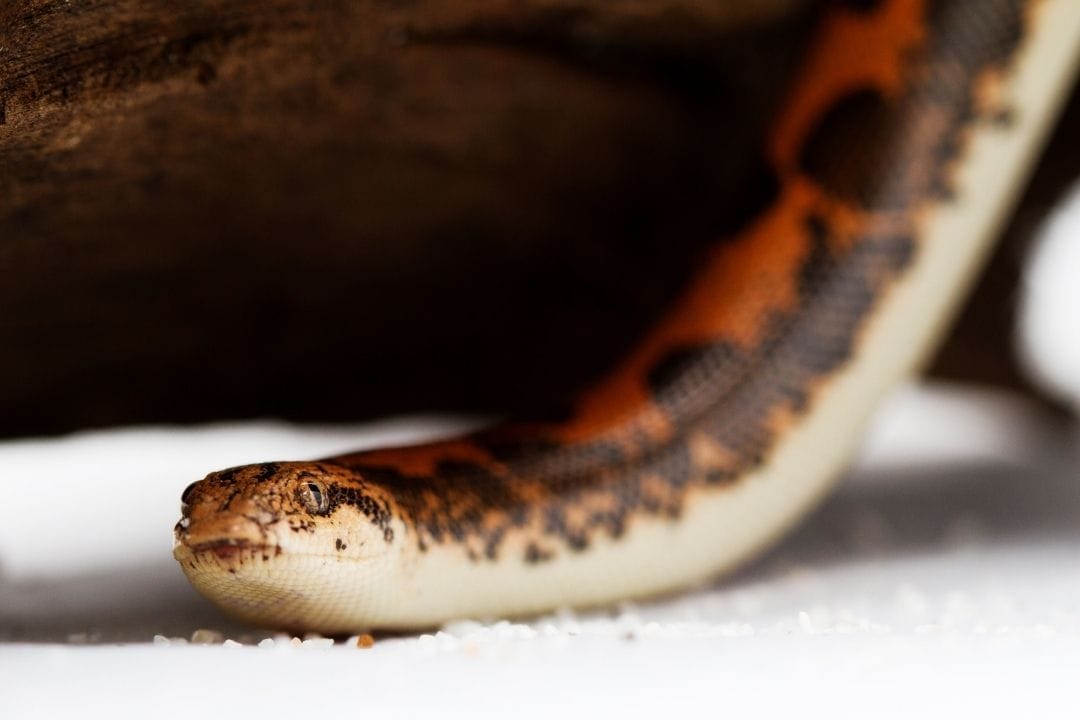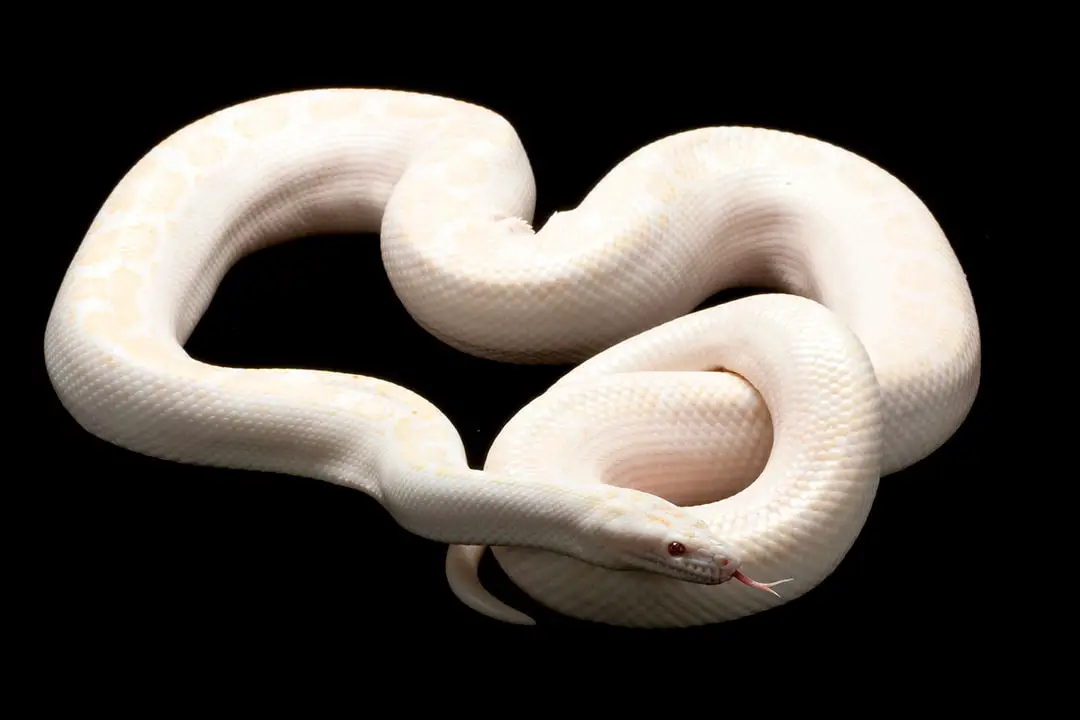Breeding Kenyan sand boas is not that difficult, but it still requires a bit more planning and knowledge than putting two snakes together and hoping for baby snakes.
To breed, females must be at least two years old, 20 inches, and 325 grams. Males can breed before they reach the age of one year.
Larger is better when it comes to breeding. If your female is too young or small, avoid breeding her.
In this article, I will provide you with easy steps on how to do it successfully.
1. Before Breeding
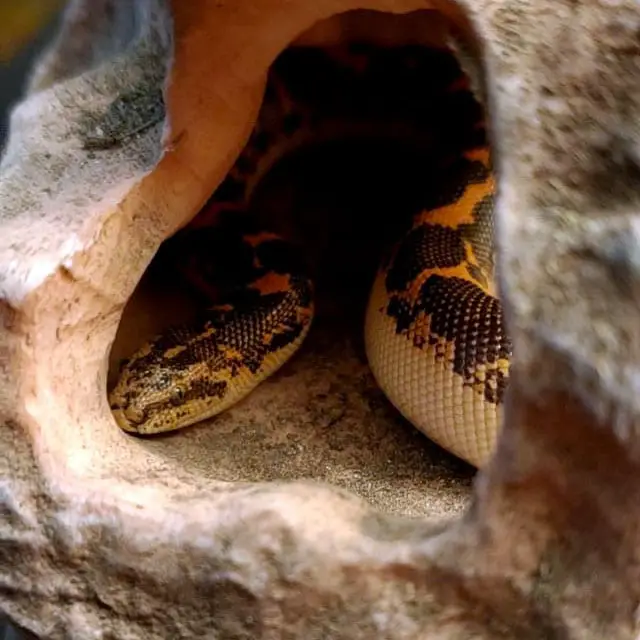
Before you even start breeding, there are a few questions you should ask yourself. You need to think about your motivation for wanting to breed snakes.
Snake breeding can be a rewarding hobby for some and a source of income for others. To be honest, if you are looking for a way to make money, breeding snakes is a difficult path to take.
While it is true that some people make a living by breeding and selling snakes, I have never met anyone who has earned so much money in this business.
You should also consider the amount of money you need, especially if you breed Kenyan boas for profit.
The next thing you should think about is what you will do with baby snakes once they are born. Keep in mind you should look after at least 10-20 Kenyan boas newborns.
Consider the cost of feeding these hungry mouths for even a couple of months. Baby snakes are voracious eaters, requiring a couple of rats per week to grow.
In addition, you will need to purchase additional cages and fill them with proper humidity, lighting, and amenities.
Now that you have considered these things, the first step before the breeding process is to check whether your adults are healthy and genetically free of any issues they can pass down on baby snakes.
Females should be fully mature because if you breed a snake too soon, it can cause serious health problems. Find a good local veterinarian just in case, because even healthy snakes can have problems during the breeding process.
You need to ensure that you keep all of your hatchlings separate, feed them, and find them new homes.
2. Brumation
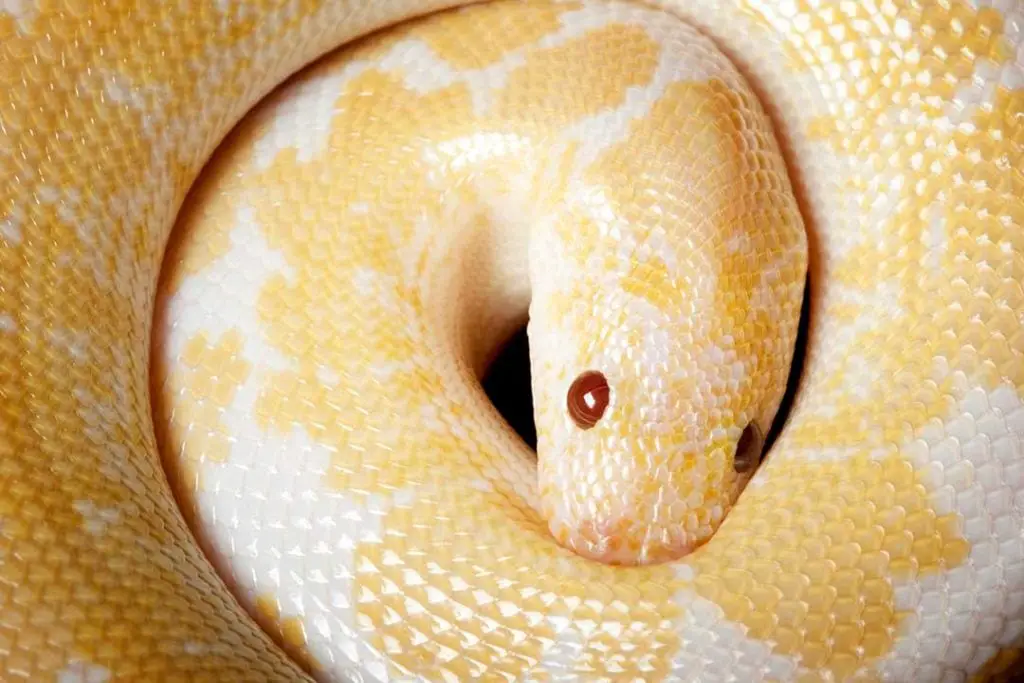
The next step is to prepare your female by brumation.
Brumation occurs naturally in the wild. It is optional in captivity, but I recommend you do it as it helps your snake.
The snake would naturally breed in the spring when the weather improves. That is why you have to meet some conditions snakes require in order to breed successfully.
You should lower the temperature in the enclosure around December. The temperature should be 65 °F (18 °C) – 70 °F. (21 °C). Make sure to do this gradually over a week.
This is much warmer than most snakes will brumate, and it is really easy to achieve even in a room with central heating. Keep in mind you should keep your room temperature lower and have the thermostat set to 65 °F.
It is crucial to maintain this temperature and find a cooler location to brumate snakes if you believe room temperature will rise above the required one.
If the temperature rises, a snake cannot digest food properly without a regular heat source. However, if you take care of it, snakes can still digest their food. That is because this temperature is not too low, and you can continue to give them small meals less frequently.
Also, take care of your snake’s weight and do not feed it two weeks before and during the cooling period. Do not forget to ensure fresh water for snakes during brumation.
Return temperature to normal after three months, and resume a normal feeding regimen a week later. Allow the females to eat whatever they want. If they are eating more than usual at this time, this is a good sign they are preparing for breeding.
3. Check for Signs of Ovulation
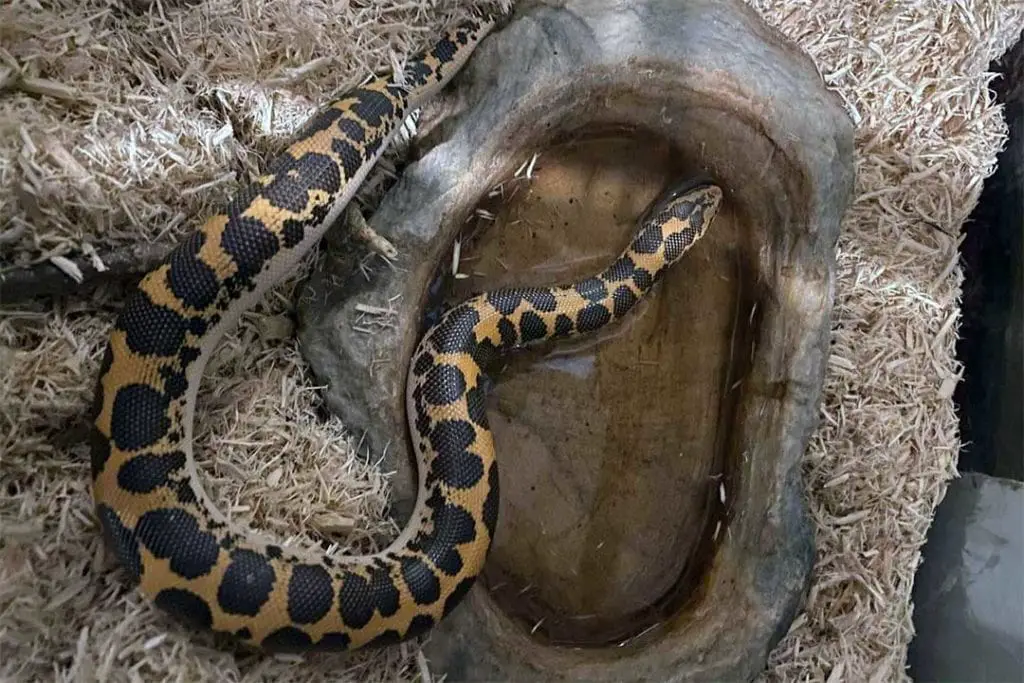
In the spring, you might notice ovulation signs in your female Kenyan sand boa. Ovulation occurs when her eggs have matured and are ready for fertilization.
Although Kenyan sand boas are live-bearing, eggs develop inside them. These, however, do not lay eggs; instead, they develop into live young.
Ovulation causes the snake’s abdomen to bulge and swell, and it feels firm to the touch. Snake may refuse to eat while ovulating, and she may become defensive or aggressive.
If the male is in the female proximity, he can surely tell she is ovulating.
He may become hyperactive and roam the tank to find a female he can smell. At this point, he can also refuse food.
Ovulation is not always a sure sign a snake is ready because it sometimes passes too quickly, so you do not even notice it. Some females do not ovulate until mated. The best sign a female is ready is 4-6 weeks after brumation when she sheds.
Sometimes, snakes may injure during mating. This is a sign a female is not ready, especially if she hisses, threatens, and even kills a male. If you notice any of these signs, remove the male.
When the female snake accepts the male, he will slide on top of her and wrap his tail around hers. At this point, they will start mating.
If the male does not seem interested, introduce him to another male. They will want to fight, which helps them release their breeding season. Do not let them keep fighting. Instead, separate them, and place the male you want to breed back with your female.
4. Look for Signs the Female is Pregnant
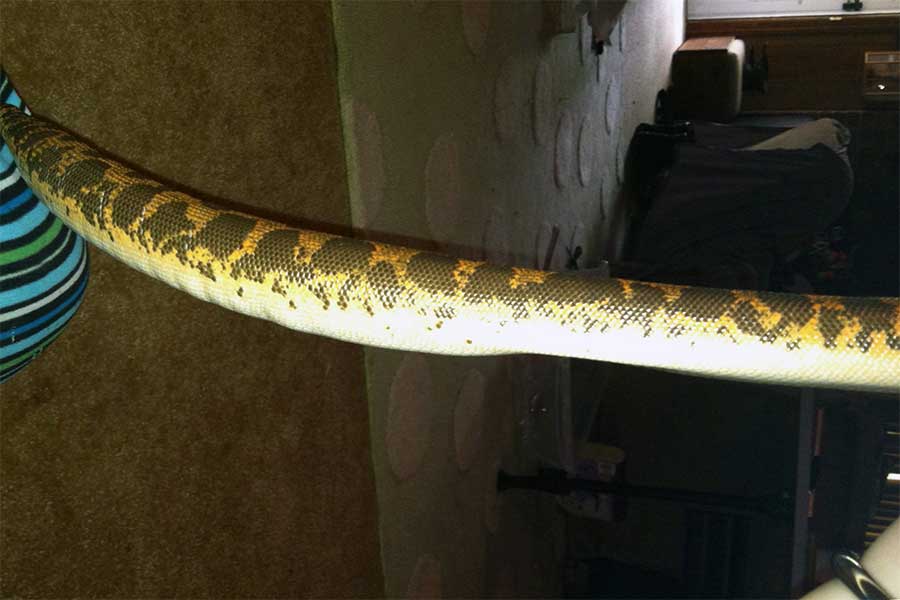
If your Kenyan sand boas mating turned out successful, the female will be pregnant. It means eggs inside her are developing. There are some signs your female is pregnant and you should check them out.
You will notice a swollen abdomen, similar to ovulation, but this is more noticeable. The skin will look stretched.
Also, the female will look for the warmest spot in the enclosure to rest. Provide the heat via heat cable with a thermostat. You can also get an undertaking heating pad. It is very useful and inexpensive.
Tikaton Reptile Heat Pad
- Only uses 8 Watts of electricity to operate
- Power adjustable so you can use it in 10 up to 50 gallons enclosure.
- Zero risk of burning your snake
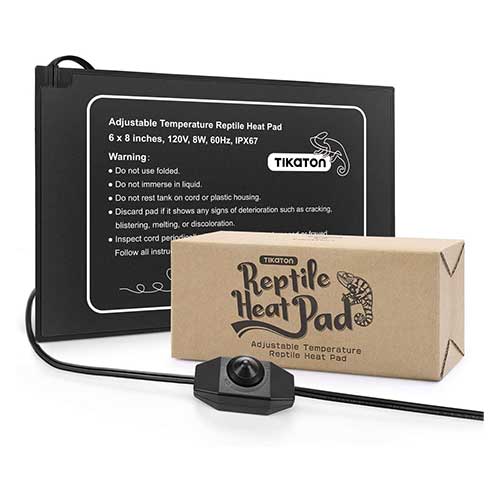
You should also look at the way your snake is resting. Pregnant Kenyan sand boas lie inverted on their backs. The next sign the female is pregnant is a change in appetite.
She may want more food because she is feeding her growing offspring as well. Some pregnant Kenyan sand boas, on the other hand, may stop eating completely.
The pregnant snake will start roaming around the enclosure, which means she is ready to give birth. She wants a safe place to have her babies.
You may also notice that her personality is different. Some pregnant snakes are defensive, usually because they are uncomfortable.
5. Separate the Male and the Female
When you are sure the female is pregnant, you can remove the male from her enclosure and feed him because he will surely be hungry. Now you can reintroduce the male to his normal routine.
All you need to do now is to take care of your female Kenyan sand boa until she gives birth. Try not to disturb her too much, give her peace.
Make sure she has access to clean water. Kenyan sand boas typically eat a lot while pregnant because they are eating for two. So, you can feed her more frequently than usual.
However, give her smaller prey because large meals may be harmful to the development of baby snakes.
6. Remove the Babies Soon After Birth
Your Kenyan sand boa will shed again in August or September, which indicates that she is ready to give birth. This mostly happens at night.
Kenyan sand boas do not lay eggs. They give birth to live babies. There is no need for an incubator. The female boa keeps the embryos inside her and gives birth to fully formed babies encased in individual membranes. During delivery, she frequently consumes unfertilized slugs.
Snakes can have a large number of offspring per litter. This is due to the fact that predators pick off small snakes in the wild. More children mean that at least some of them will make it until adulthood.
A Kenyan sand boa’s baby number ranges from10-20. Some Kenyan sand boas can have up to 30 babies at once or even 32, which is the record.
Young Kenyan sand boas who have never given birth before will not have a great number of babies. Your snake’s first litter will almost be 5-12, which is not a big number. Older and experienced females may have up to 25 babies.
When you wake up in the morning, you will most likely see curious baby snakes exploring the enclosure. Babies are alert and mobile from birth. Each baby is approximately 8 inches long.
Kenyan sand boas hatch from a thin membrane. Most of the babies will escape on their own after piercing the sac. Weak babies will struggle, and some may not survive. Unfortunately, this is an unavoidable side effect of snake breeding.
Remove babies immediately and place them in a separate container. Look everywhere carefully as some babies may hide among substrates. A shoebox-sized container is perfect with small air holes, a water bowl, and a heat source.
7. Feed the Babies
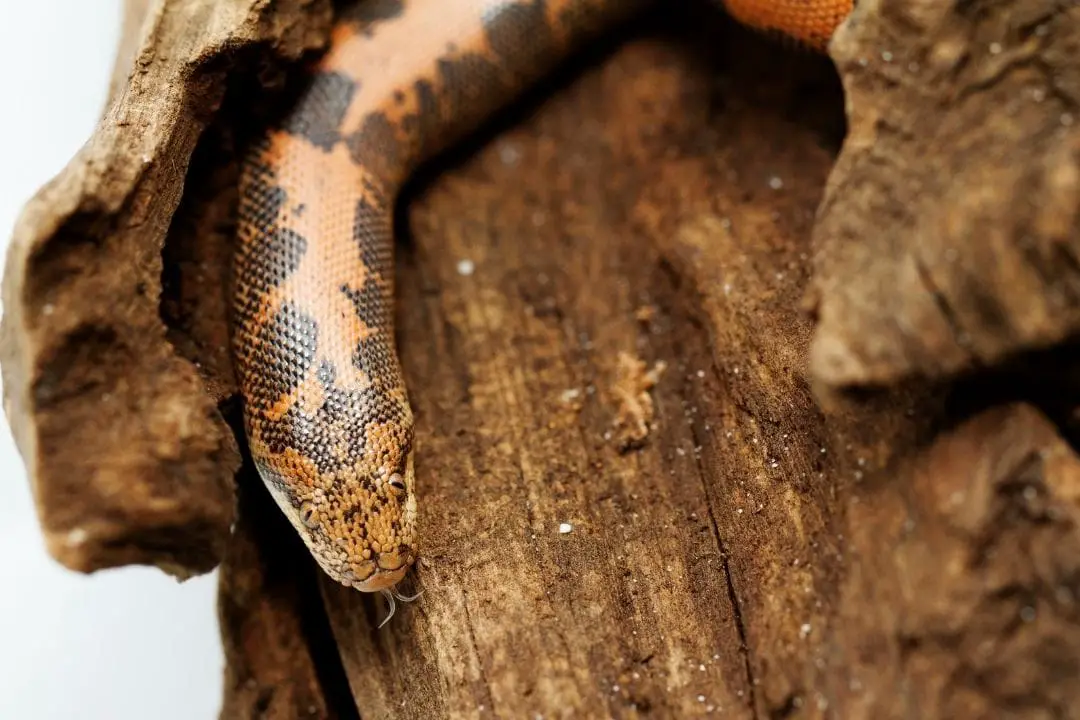
Some babies will be ready to eat right away. However, most newborns will not show any interest in food until their first shed. This usually occurs 1-2 weeks after the birth.
Feed your newborn with some rodent that is the same size as the snake’s widest part. They will usually eat pinky mice. When you offer food, see which snake will take it.
You can also remove one snake from its container and repeat this until it accepts the food.
This method proved successful for many owners. It may get babies into a natural feeding mode because they will feel excited every time they see food.
There are some cases when one snake swallows another if they go after the same food. That is why you need to always monitor them.
You can also try to thaw a frozen mouse.
You can do it easily by immersing it in a cup of hot tap water for 10-20 minutes until it is completely warm. Some sand boas do not seem to mind if their mice get wet, but you can thaw them in a sealed plastic bag or avoid the water entirely by wrapping them in a heating pad.
Babies will also want to eat fuzzies. You should never feed babies in the cage because ingested substrate may cause death. Sand boas are mostly nocturnal, they feed at night.
You can put them in a cloth snake bag and feed them. You can keep the bag in their container for warmth and safety.
Another way to get the babies to eat is to scent the pinkie. You can rub a snake with your pinkie and then get the food and offer it to them.
You can also take a frozen pinke mouse and “brain” it. You only need to poke a small hole in the center of the pinkie’s skull and squeeze the head gently so that a small portion of the brain comes out.
You can use a paperclip to spread some of this brain tissue down the pinkie’s nose and mouth before placing the pinkie and the snake in a deli cup overnight.
This trick may seem disgusting, but it usually works well.
As a last resort, you can put food in the baby’s mouth yourself. Hold the snake behind its head and place a small pinkie mouse to see if it will swallow it.
You need to repeat this process several times before the snake eats. Some babies dislike this method because it is too stressful for them. If you notice babies do not respond, give up and try other methods.
It is difficult to get babies to gain weight, but many believe feeding baby snakes a lot so they grow quickly will shorten their lives. Many believe feeding baby snakes a lot so they grow quickly will shorten their lives.
However, a hungry snake may be grumpy, and if kept underfed, it will always be tiny. Keep an eye on your snake and adjust the amount and frequency of food as needed.
8. Take Care Of Hatchlings
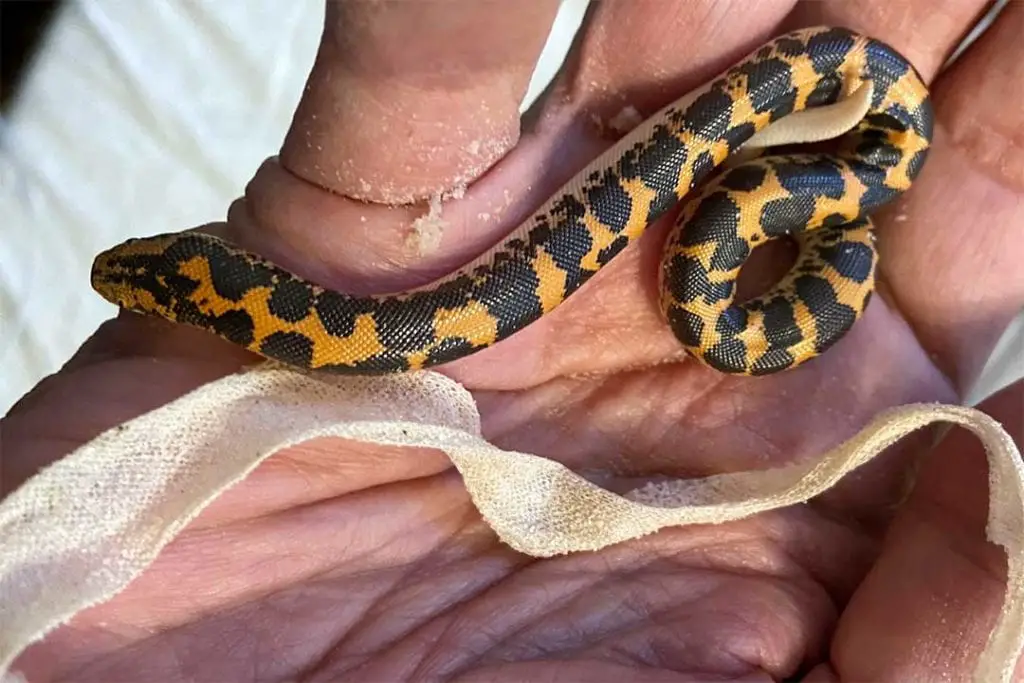
Snakes born in captivity are easy to take care of. They are less aggressive and much better adapted to the environment, and easy to feed. As I mentioned before, Kenyan sand boas babies love pinkie mice. Besides, they are in good physical and mental health because they have avoided all the hassle of adapting to new surroundings.
The temperature of a newborn’s container should be around 95 °F under the light — this is their hotspot. The cooler side of the container should be around 80 °F.
Try to keep heat sources outside their container to avoid any burns. If the ambient temperature is not too cold, you can put heat tape or heat pads under one part of the container to keep it warm.
If you keep more than a few snakes, a space heater is an excellent way to warm up a room.
There are many glass aquariums or plastic cages available. Kenyan sand boas babies prefer smaller containers because it is easier for them to find food. A shoebox is ideal, cheap, and easy to clean. To keep the container from becoming too humid, you can install ventilation holes on the sides.
Everything you need to know about caring for Kenyan Sand Boas in captivity:
Read our Kenyan Sand Boa Care Sheet (Complete Guide)
You can line the bottom of the container with newspaper, sand, or aspen — Kenyan sand boas love it! Newspaper is convenient, simple to clean, and is a haven for curious hatchlings.
Sometimes, hatchlings can have problems with pine shaving or sand that get caught in their mouth.
Try to avoid it if it poses a problem. Clean their space once or twice a week. A clean water bowl should be always available.
The good idea is to find a hide box for the babies in which you can put small branches or other decorations for snake terrariums and enclosures.
